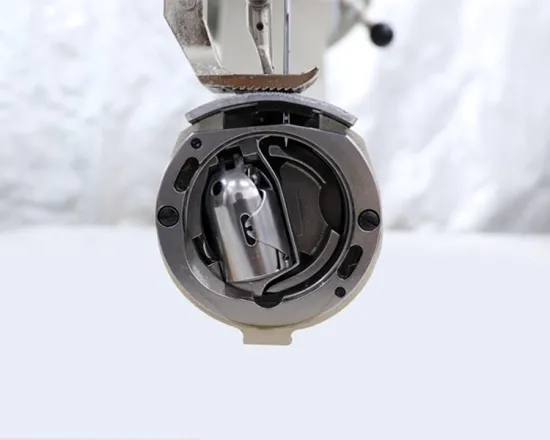Advanced Industrial Walking Foot Sewing Machines for Precision Fabrication and Enhanced Performance
The Industrial Walking Foot Sewing Machine Revolutionizing Sewing Efficiency
In the world of sewing, particularly within industrial settings, the evolution of machinery has played a crucial role in enhancing productivity and ensuring high-quality output. One machine that has significantly impacted the sewing industry is the industrial walking foot sewing machine. This specialized tool is designed for heavy materials and complex stitching tasks, making it an essential piece of equipment for many manufacturers.
Understanding the Walking Foot Mechanism
The walking foot sewing machine gets its name from its unique feeding mechanism. Unlike standard sewing machines that use a feed dog to move the fabric, the walking foot features a dual-feed system. The presser foot not only holds the fabric in place but also moves in sync with the feed dog. This coordinated movement is particularly beneficial when sewing layered materials, such as leather, canvas, or multiple fabric plies.
The walking foot design allows for a more consistent stitch length, preventing puckering and shifting of the fabric during operation. This quality is vital when working on projects that require precision, such as upholstery, luggage, and certain types of garments. The result is a professional finish that meets or exceeds consumer expectations.
Versatility in Applications
One of the most significant advantages of industrial walking foot sewing machines is their versatility. They are not limited to a single type of fabric or sewing technique. These machines can handle everything from heavy-duty canvas and denim to lighter-weight fabrics, making them ideal for a wide range of applications. Manufacturers can use the same machine for various products, which streamlines production processes and reduces the need for multiple machines.
Common applications include sewing tents, backpacks, tarps, and upholstery materials. In the garment industry, they are often used to sew seams on denim jeans and heavy outerwear. The ability to conveniently switch between materials and projects enhances operational efficiency in any production line.
Enhanced Stitching Capabilities
Industrial walking foot sewing machines come equipped with various stitch options that cater to specific needs. They can perform straight stitching, zigzag stitching, and decorative stitching, allowing users to create an array of designs and finishes. Many models also afford adjustable stitch length, giving operators the flexibility to adjust the feeding pace based on material thickness.
industrial walking foot sewing machine

Additionally, some advanced walking foot sewing machines include features like automatic thread trimming, programmable stitching patterns, and digital displays
. These innovations contribute to faster production times, reduced material waste, and improved quality control.Investing in Durability and Maintenance
When selecting an industrial walking foot sewing machine, durability is a critical factor to consider. These machines are built to withstand the rigors of continuous use in a high-demand environment. Heavy-duty construction, reinforced components, and high-performance motors make them reliable workhorses in any sewing operation.
Regular maintenance is equally important to ensure the longevity of these machines. This includes routine cleaning, oiling moving parts, and checking tension settings. Operators should also be well-trained in troubleshooting common issues to minimize downtime and maintain productivity.
The Future of Industrial Sewing
As the sewing industry continues to evolve, so too does the technology surrounding industrial walking foot sewing machines. Innovations such as automated systems, robotics, and advancements in digital sewing technology are shaping the future of manufacturing. These developments promise to enhance production capabilities further, reduce labor costs, and improve precision.
Furthermore, sustainability is becoming an increasingly vital aspect of production in the textile sector. The integration of eco-friendly practices and materials in conjunction with the efficiency of walking foot sewing machines can lead to a more sustainable approach in the industry.
Conclusion
In summary, the industrial walking foot sewing machine stands as a testament to the advancements in sewing technology. Its ability to handle a variety of materials with precision not only enhances productivity and quality but also offers versatility across numerous applications. For companies aiming to optimize their sewing processes and maintain high standards, investing in an industrial walking foot sewing machine is a strategic decision that can yield substantial returns. As technology progresses, these machines are sure to become even more integral to the fabric of the industrial sewing landscape, driving innovation and efficiency well into the future.
-
Industrial Cylinder Arm Sewing Machine: Revolutionizing Heavy-Duty SewingNewsJul.28,2025
-
Cylinder Arm Sewing Machine: Perfect for Special Sewing ApplicationsNewsJul.28,2025
-
Cylinder Bed Sewing Machine: Essential for Sewing Complex MaterialsNewsJul.28,2025
-
Heavy Duty Sewing Machine: The Essential Tool for Industrial ApplicationsNewsJul.28,2025
-
Computerized Pattern Sewing Machine: Revolutionizing Precision StitchingNewsJul.28,2025
-
Heavy Duty Industrial Sewing Machine: Power Meets PrecisionNewsJul.28,2025
-
Leather Sewing Machine: The Industrial Standard for Tough MaterialsNewsJul.18,2025





























